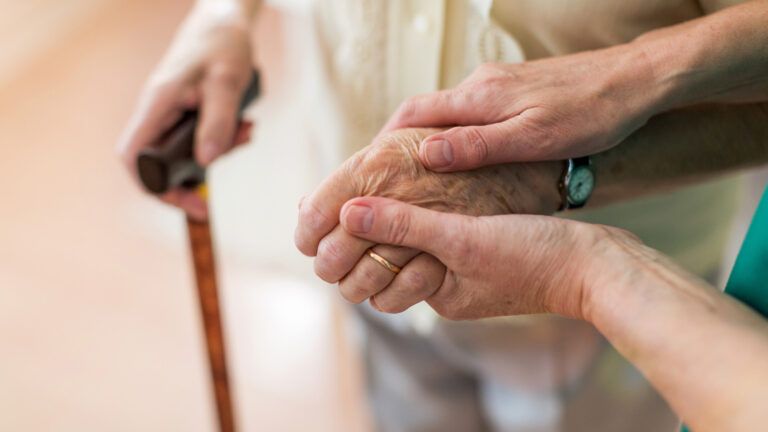Content provided by Home Instead Senior Care.
Learning a loved one has Alzheimer’s disease or another dementia disorder can be frightening. But preparing for the behaviors that could result may help both individuals and their families better cope with the disease and keep loved ones safe.
Always ask yourself if that individual has an unmet need that could trigger a wandering incident. Proactive steps could help families reduce the risks for wandering and be better prepared if an incident occurs.
Get Ready
You can help protect an individual at risk for wandering by ensuring he or she always is wearing identification. Consider an ID bracelet, such as one from the MediAlert® + Alzheimer’s Association Safe Return® Program. This is a fee-based 24-hour nationwide emergency response service for individuals with Alzheimer’s disease or a related dementia who wander or have a medical emergency.
Prepare the Home
Safeguarding a home is one important preparedness step family caregivers can undertake for a loved one prone to wandering. Many products exist on the market to help keep older adults with dementia safe at home. These include alarms that attach to doors and windows, covers for doorknobs that help prevent an individual from leaving home, and higher-security locks. Other strategies include placing locks out of eye-level view, and painting doors and door frames the same color as walls to “camouflage” exits.
READ MORE: ADVICE FOR ALZHEIMER’S FAMILY CAREGIVERS
A caregiver named Arlene says her husband often awakes at night not knowing where he is or thinking it is time to get up. “So we put a motion detector in the bedroom,” she said. “That has worked well for me.”
Following are other tips to be proactive about safety and wandering:
- Make a path in the home where it is safe for an individual to wander. Closing off certain parts of a room or locking doors can help achieve this goal. Such paths also can be created outdoors—in a garden, for instance.
- One family caregiver remembers her husband getting outdoors in the middle of the night in the dead of winter. “A fence kept him from wandering from home so he came into the garage. He was banging on the door at 5 a.m., which woke me up. If he had gotten out of the yard, he would possibly have died from the cold.” Install barriers and fences in the yard to help ensure that a loved one doesn’t wander from home or into unsafe territory.
- Keep walkways well-lit. Add extra lights to entries, doorways, stairways, and areas between rooms and bathrooms. Use night lights in hallways, bedrooms and bathrooms to help prevent accidents and reduce disorientation.
- Place medications in a locked drawer or cabinet. To help ensure that medications are taken safely, use a pill box organizer or keep a daily list and check off each medication as it is taken. Check out Simple Meds at SimpleMedsRx.com for a way to help seniors manage medications.
- Remove tripping hazards. Keep floors and other surfaces clutter-free. Remove objects such as magazine racks, coffee tables and floor lamps.
For more information from the Home Instead Senior Care® network about safeguarding a home, visit Making Home Safer for Seniors® and for other tips see the Alzheimer’s Association’s Home Safety and Alzheimer’s page. In addition, consider setting up an alert network through the Home Instead Senior Care Missing Senior NetworkSM. This free web service allows family caregivers to create an account with a list of contacts to alert in the event an individual goes missing.





